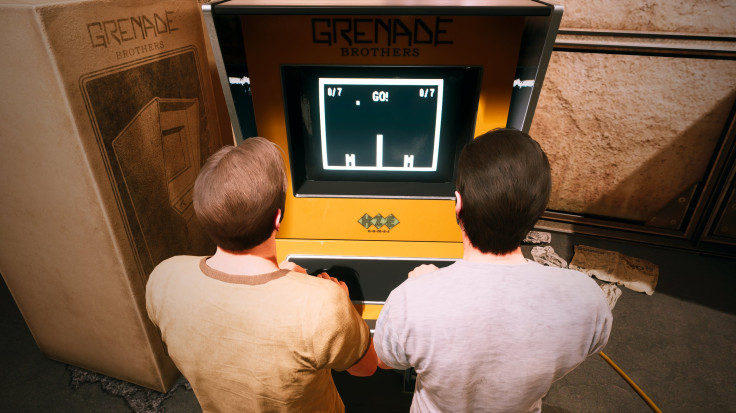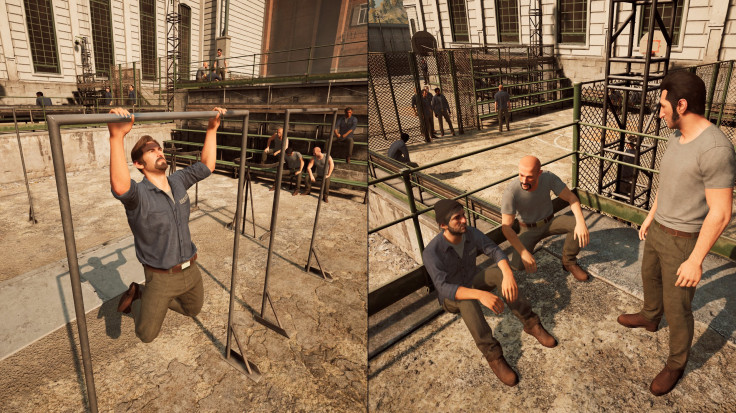A Way Out intrigued us since it was first announced in June because it promised a totally unique experience. Instead of traditionally working through a hand-crafted narrative alone, this game mandates local or online co-op play. It’s an ambitious idea, taken on by a fairly small team. Speaking exclusively to Player.One, Director Josef Fares discussed the tradeoffs of delivering on an untested concept.
Fares conceived of A Way Out shortly after the release of his last game, Brothers: A Tale Of Two Sons, in 2013. “I was looking for a couch co-op experience that wasn't just a drop-in, drop-out game. I wanted something that meant something, something where your character had a personality and not just leveling up stuff,” he told us. “I wanted to tell a story for two players where you actually care about your characters and the people you're controlling.”
Undaunted by the challenge, Fares assembled a team of 12 coders that has since swelled to 40. That crew helped create the bombastic vertical slices seen at The Game Awards and E3. but Fares was still very careful to temper expectations for the final build. While suggesting gamers “won't believe what this small group has done,” he was also very direct in admitting “this is not a triple-A title in any way. There's a $29 price on it, so the pacing of the game will go up and down.”
He elaborated further by confirming A Way Out’s scope will pale in comparison to the sprawling masterpieces made by larger studios like Naughty Dog. “Some people have compared us to Uncharted, but it's definitely not Uncharted. I sometimes joke that we have their coffee budget,” he said mid-laugh. In other words, despite being partially backed by funding from Electronic Arts, A Way Out is a very indie game made by a very indie team.
To those ends, he’s has had to cut a few corners to serve a larger vision. The final game will last about six or seven hours, which Fares feels is “as long as it needs to be.” Within that framework, he’s disregarded the choice and replayability championed by other story-focused developers like Telltale.

“Replayability isn't really something I think about, because I don't replay most of the story games that I've played. If you look at the statistics, people rarely finish games, nevermind replay them. So why would we focus on replay when you hardly finish them? I would say it's a bigger problem that people get tired of a game halfway in,” he explained.
In A Way Out, players will sneak around guards, play various mini-games, raft down treacherous rivers and occasionally shoot when it makes sense for the story. But some of these mechanics, like shooting for example, are the job of a single programmer.
Fares agreed staffing limitations could lead to slightly less polish in the end, but the prospect doesn’t concern him. “For me, it's more important to have a fresh, varied experience than a having a shooting mechanic that's super-polished that you do for seven hours,” Fares asserted. “I would rather risk having points in the game that are less polished than doing the same thing over and over again. I would rather serve the story in terms of what's going on and the gameplay variation than doing one mechanic that is super-polished.”
True to Fares’ words, his 2018 game shoulders risk in the narrative genre with its unique co-op conceit and complete lack of a traditional gameplay loop. In an era of choice, abandonment of failstates and branching replayability, A Way Out capitalizes on none of those trends.
“I know it's very risky in many ways, but I don't care about the risk. I'm OK with risk, because I just stick with the vision and go with it. That's what you have to do I think. And that's what I hope I can inspire others to do as well,” he said with a grin.
Come back later in the week to learn about how Friend Pass will make A Way Out even truer to Fares’ ambitions.
A Way Out comes to PS4, Xbox One and PC March 23. Read our previous exclusive on Fares’ Game Awards rant here.
Are you OK with A Way Out sacrificing polish and replayability for a grander vision? Tell us in the comments section.



















